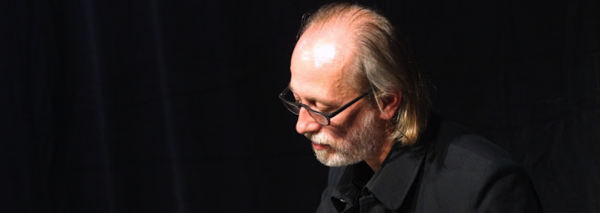A practicing Lacanian psychoanalyst, Darian Leader is one of a dying breed. It is no overstatement to say that psychoanalysis is not only out of fashion and widely scorned but largely dismissed as an outdated discipline borne of a personality cult; Leader himself has described analysts today as ‘mutants scavenging after a nuclear holocaust’.
What makes his position rarer still is that he is also a celebrated author; in the course of eight books Leader has established himself as an elegant and erudite voice of Lacanian theory in academic yet popular books commenting on love, the sexes, the history of psychoanalysis, the mind and the body. Much fêted by the artworld he has also written numerous essays on the work of leading British artists such as Antony Gormley and Marc Quinn – many of whom he counts as friends – and is often presented ‘in conversation’ with artists.
A remarkable feature of Leader’s writing is the seeming ease with which he can make complex and strange psychoanalytic concepts accessible to a general audience. This arises in part from the clarity of his prose but also from his ability to illustrate his concepts with examples taken from cinema, art, literature, the public canonical case studies and the privacy of the session – moving between high and low culture whilst avoiding the pitfalls of that method, now so in vogue in our post-cultural theory era.
This is no attempt at a showy parlour game of pop-deconstruction, but is a method merited because, as Leader explains, ‘What matters here is not the treatment of any one genre but rather fidelity to questions.’ It is in this way that readers are able to find his writings on the psyche and the arts educational in the best sense: they provoke us to consider more carefully, move beyond appearances and question further. Whatever the topic, we are invited to pursue Leader’s primary concern: the uniquely human capacity for meaning, and the questioning of it.
In recent years, in What is Madness? and the newly released Strictly Bipolar, he has emerged as a savage critic of ‘Big Pharma’, a campaigning voice against the rapid movement towards drug-based treatments for mental health disorders in health policy across the world. Whilst his literary work, art writing and policy politics may seem like somewhat disparate worlds to inhabit, at the heart of each remains his psychoanalytic practice.
His early books on the sexes and relationships, Why Do Women Write More Letters Than They Post? and Promises Lovers Make When it Gets Late inspired much startled praise, prompting the Guardian to conjure him in the public mind thus: ‘Imagine an Umberto Eco more into the self than semiotics, or Oliver Sacks as an agony aunt.’ However, even these ostensibly lighter books dealt with the darkest of human nature, and in turn prompt us to consider these elements within our own experience. When reading his books, as all psychoanalytic literature, one finds oneself playing at a game of identification; searching out (and overlooking) in the narratives presented, our friends, our family and ourselves.
In this play of identification, a figure harder to picture clearly is that of Darian Leader himself. There is something incredibly intimidating about interviewing a psychoanalyst, a person who is primarily concerned with conversation, listening to what is and is not said. There is also the consideration, if we note the traditional assumptions of the analytic dyad that the analyst appear as a neutral listening figure drawing out the transference of the analysand, that the analyst can be cast as a character trained in the art of concealing themselves.
It is therefore difficult to conduct a conversation about psychoanalysis with an analyst without an acute preoccupation with subtext. However, as we sat talking in his light, book-lined room I found Darian Leader to be an open, engaging and generous conversant. As I came to listen back to the recording of the interview I registered, apparently for the first time, the background noise of building works. Rattling, banging, drilling, clunking – the murmurings of unseen work being done by unknown agents in the background of the conversation.




